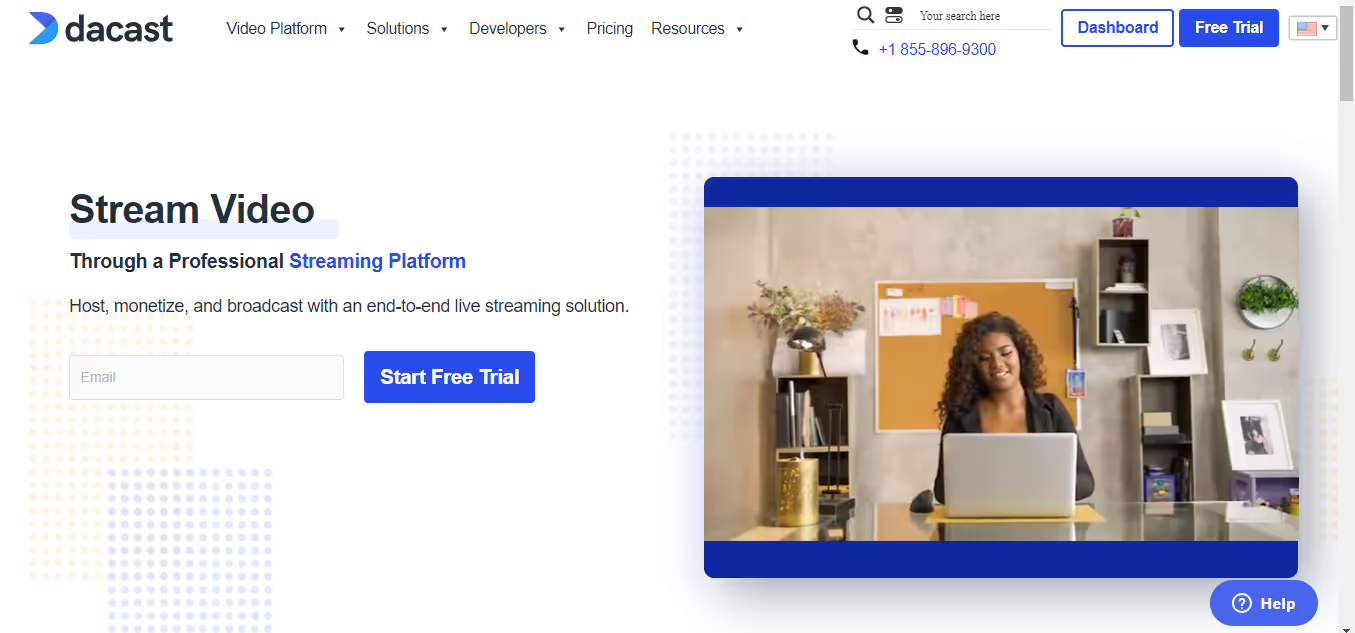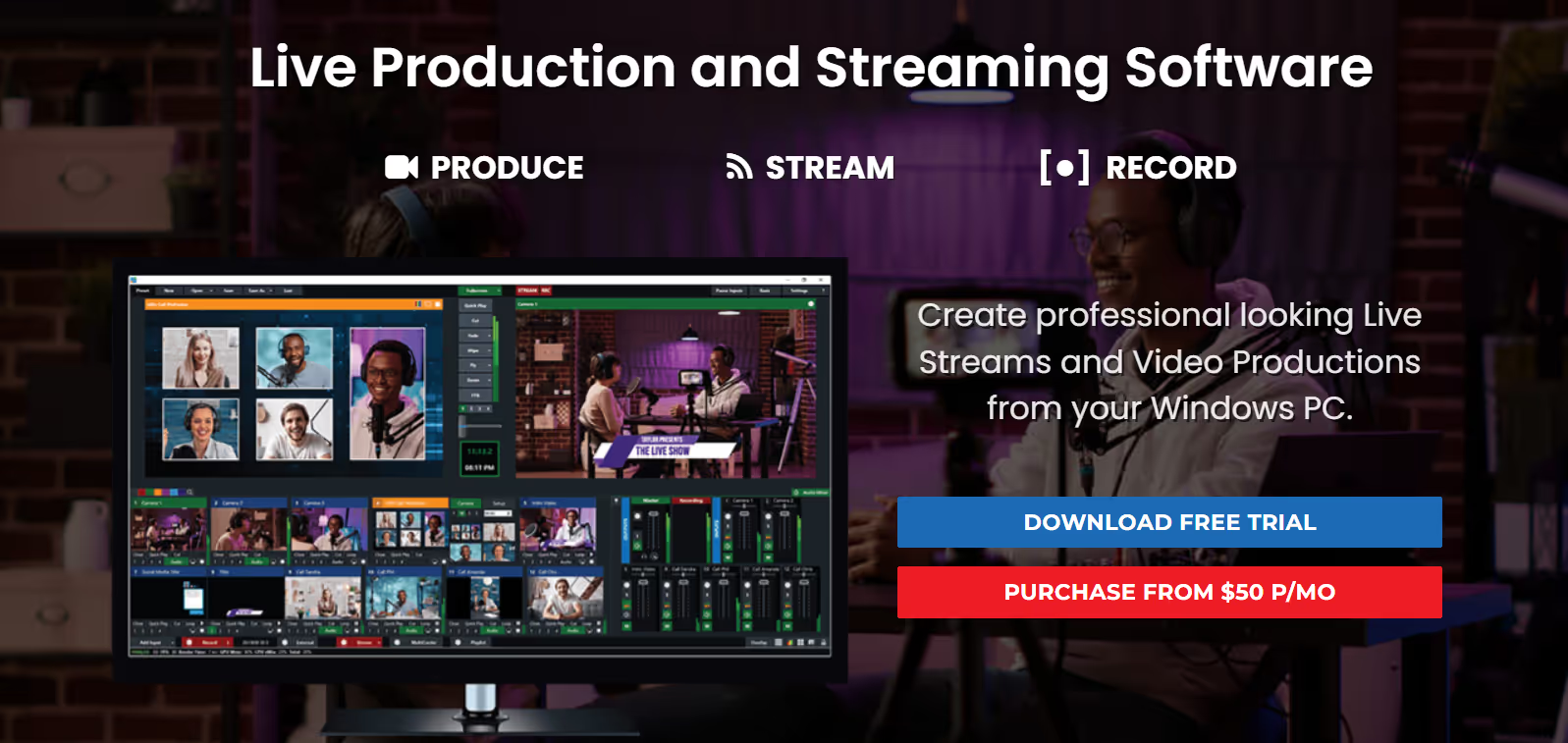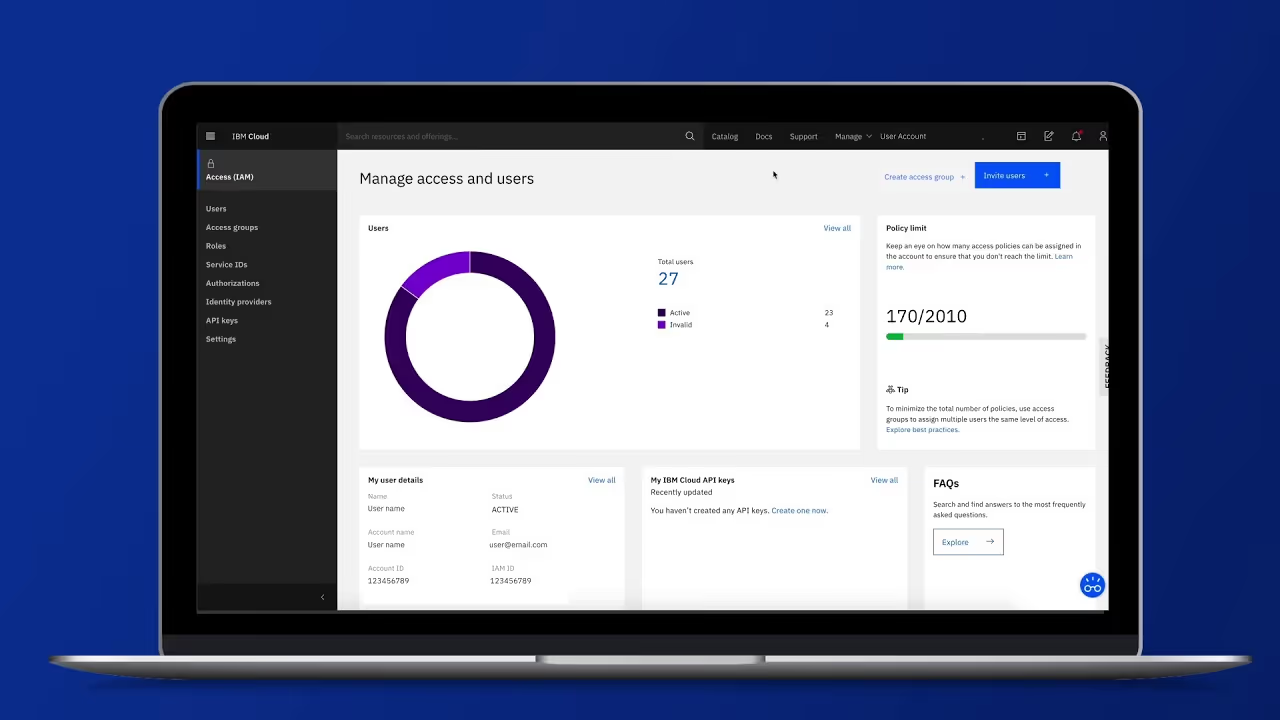




Key Takeaways
- eLearning Growth: The global eLearning market is booming, with live streaming playing a key role in making education more flexible, accessible, and engaging for learners worldwide.
- Choosing the Right Platform: Selecting a top-tier live streaming platform is crucial for successful online teaching. Look for features like high-quality video, ease of use, and audience interaction tools to enhance learning experiences.
- Effective Streaming Tips: Prepare thoroughly—use the right equipment, plan your content structure, and rehearse your session to ensure a seamless and professional live-streamed class.
The eLearning market is growing globally, and according to Research and Markets, by the year 2026, the entire industry will have grown to $457.8 billion. This is due to the quality, flexibility, and remote access provided by live streaming classes and online courses.
Free streaming platforms like YouTube, Zoom, and Facebook have significantly contributed to the growth of the eLearning market by providing convenient and accessible options for educators and learners.
Due to the increasing demand of the online learning, live streaming classrooms streaming becomes one of the key approaches for teachers. It is now common for a large number of individuals to attend classes that are conducted through the Internet. Educators must now incorporate many strategies into their teaching process to make the traditional classroom environment interesting, participative and meaningful, especially within online lessons and courses.
In this case, it is worth noting the advantages of delivering lessons through live streaming platforms, including reaching a wider audience, ensuring that each learner has the chance to engage with the session, and having the ability to organize it.
However, implementing this approach for teaching online has limitations, some of which include handling the students, the program, and the virtual classroom. In this blog, teachers will be provided firsthand guidance on how to live stream their classes and enhance their eLearning experience. Such tips will help you get good results in online streaming.
What is the Live Streaming Platform?
In the process of developing the modern world in which people have access to the Internet and are increasingly beginning to spend time online, a live streaming video platform is a necessary tool, allowing users to actively share videos live on the Internet with people from different countries. They allow people to disseminate information through live events, presentations, seminars, and other dynamic information in real-time to other people, businesses, organizations, and communities.
It would be safe to assume that in the future, the concept of live-streaming courses will only gain more prominence and importance in everyday life and will spread across all spheres of communication and information exchange.
Choosing the Right Live Streaming Platform

Selecting the best professional streaming platform, including online live class apps, is essential to provide viewers high-quality video as more and more people choose to watch live feeds of different events or entertainment. When faced with many options, being aware of the primary factors that decide whether the streaming classes succeed or fail is helpful.
Here are a few of the most important elements of the top live streaming platform that you should consider.
Video Quality
High-quality video displays are crucial to delivering high-quality video conferencing. Search for one that has at least 1080p streaming capabilities and adaptive streaming so that if the viewer has a slow connection, the stream will adjust accordingly.
Ease of Use
Streamers and viewers must have an easy interface with electronic devices to control. Select a platform with easy controls, more straightforward setup procedures, and ample resources, such as tutorials or support, to guide you when starting.
Audience Interaction
Interactive elements such as live chat, Q&A, and polling can significantly improve audience interaction. Platforms offer features that make it easier to build an engaging interface for your audience.
Monetization Options
For those who want to make money, research and choose platforms with flexible monetization possibilities, including pay-per-view, subscriptions, and ad placements. These features can assist you in making the right approach for monetizing your content.
Security and Privacy
Check and verify that the platform provides adequate measures to handle your content and audience information. Adding password protection, stream encryption, and content protection is crucial, as they provide security and privacy.
Analytics and Reporting
Comprehensive video analytics and tools are extremely helpful in monitoring the performance and identifying the audience.
Compatibility and Integration
Select a platform accessible across multiple devices and works well with other tools you utilize, including social network sites, LMSs, and third-party applications. This helps create practical and accessible streaming platforms and introduces flexibility in streaming patterns.
Top 10 Live Streaming Classroom Platforms
Due to the popularity of online learning, selecting the optimal live-streaming service for your online classroom has become a critical task. As a result, we narrowed down the choice and provided you with a list of the top 10 live-streaming services that can be useful for educators.
These platforms provide various features to create a practical approach to teaching and learning for your learning-teaching process.
Dacast

- Dacast is a solution that provides an all-encompassing live streaming service with HD quality, analytical tools, and safety.
- The friendly UI makes it easy for educators to create and manage the live sessions as appropriate.
- Advanced features like monetization options and 24/7 customer support set Dacast as a dependable partner in presenting quality educational material.
Panopto

- Specifically, Panopto offers features tailored for educational settings, including live solid streaming, recording, and content management functionality.
- It is designed to integrate with learning management systems (LMS) to work smoothly for teachers and students.
- Panopto also has advanced search functions that allow for quick and easy identification of individual clips in the given video.
Muvi

- Muvi is an integrated solution for live streaming, video sharing, market presence, and sales.
- In its current win, the service enables the user to customize the experience, allowing educators to give their live streams an identity of their own.
- Muvi will enable educators to expand their audience and monitor success by providing features such as cross-device compatibility and detailed analytics.
Hippo Video

- Hippo Video is a powerful tool for live streaming and video messaging that effectively adapts to online classes with active student participation.
- It has elements like polls and quizzes, which enable students to stay active and focused throughout the class.
- It is also compatible with the most commonly used LMSs and CRMs, which is convenient for educators.
Cincopa

- Cincopa's solution, which mainly specializes in live streaming, offers excellent media hosting and monitoring features.
- It boasts high-quality video and hosts adaptive streaming, which helps determine the stream's appropriate bandwidth quality.
- Considering its compatibility with different learning amenities, Cincopa can be of excellent use for improving your online classes.
Zoom

- Zoom has always been known for its strong performance in video conferencing and live streaming.
- It provides options like conference calls, screens, and whiteboards, perfect for teaching and learning in a virtual environment.
- Zoom has native applications, is very user-friendly, and has many teacher resources.
Kaltura

- Kaltura is a highly customizable live-streaming platform that serves a wide range of educational organizations.
- The service offers a means of live streaming VOD and has tools for content management.
- With Modern LMS integration and other educational technology systems, Kaltura brings a smooth teaching and learning experience.
Livestream

- A Vimeo member, Livestream provides high-quality live streams with built-in analytics and opportunities for interacting with viewers.
- This free platform is intended to organize large-scale events, making it convenient for use in schools and universities.
- Livestorm also comes with subpar customer support to assist educators in facilitating their sessions without interruption.
Vplayed

- Vplayed offers an open live-streaming solution with a security feature that will help protect your educational content.
- Another feature is its compatibility with the different monetization models, enabling educators to earn from their live streams.
- The returned information from the images and votes allows Vplayed to provide viewers with their participation analytics.
IBM Cloud Video

- IBM Cloud Video provides an extensive solution for live streaming that is conducive to enterprise applications based on the performance and quality of the video.
- It has unique advanced tools such as closed captioning, analytical tools, and secure protocols.
- This reliable platform enables educators to facilitate live classes without interruption, which enhances students' experience.
Preparing for Live Streaming
In live-streaming, the process must be well planned to avoid any hitches in the live-stream of a class and make it professional for both teachers and learners. Proper preparation and having the right equipment are crucial to effectively live stream a class. Here are some significant factors to consider as you prepare for your live broadcast on Facebook.
Get Relevant Tools for live-streaming
When conducting a live stream, it is advisable to ensure that you have all the appropriate tools. This includes a good computer, reliable internet connection, and sound and vision equipment.
Also, lighting can significantly improve the quality of the video, and thus, viewers will get the impression that you are a professional streamer. It is possible to put your camera on a tripod or stand to avoid causing vibrations and, hence, shoot blurry videos. Last but not least, try to have spare equipment such as cameras, lights, and props in case of mishap.
Choosing a Webcam and a Microphone
I need a reliable webcam and microphone for live streams and presentations to ensure my messages are natural and understandable. When it comes down to picking a webcam, you should look for one with a high-resolution output (at least 1080p) and, ideally, one that performs well in low-light conditions.
For instance, Logitech C920 EX552597 has received high ratings from educationists due to its high picture quality and simplicity of operation. Likewise, a good microphone should be able to pick up sounds with clear audio and less interference from the surrounding environment. Various portable USB mics, such as the Blue Yeti, are available in the market with excellent sound quality and are pretty portable.
Choosing a Streaming Encoder
A streaming encoder is a physical encoder or an application that transcodes your video streams to a format suitable for simultaneous streaming. When choosing an encoder, it will be essential to check the ease of use, suitability of the encoder for the particular streaming platform you intend to use, and the overall quality of the output you receive.
Applications like OBS Studio are favoured because they have the freedom of customization and diverse options. Ensure that the chosen encoder allows for the desired resolution and frame rates for a professional broadcast.
Getting Started with the Live Stream Classroom
Establishing a live-streaming class goes beyond merely switching the camera on. In essence, the speaker who wants to conduct an exciting and practical session on live online class platforms has to pay attention to practical details and the session's content. Here are some things that might help you get started.
Protect Your Internet Connection for Live Streaming
The internet connection's latency and reliability are significant in delivering a continuous live stream. Connect the device to the internet through an Ethernet cable to reduce the likelihood of connection disruption or instability.
Verify that your upload speed is adequate; generally, having a connection speed of 5 Mbps or more is advisable. It is also essential to check the internet connection speed before every session, and it is recommended to have an additional connection, like a mobile router, in case of connection problems.
Provide a Proper Structure to Your Live Stream Classes
By having a well-organized structure, it becomes easier to conduct a live stream that is both clear and captivating to the viewers. First, let’s specify the learning goals and milestones and the main points to be addressed as part of the learning process.
Chop your content into logical portions with a segment for questions and answers combined with informal socializing. Feel free to display such things as slides or graphics to conclude the argument and attract the audience’s attention. Last of all, rehearse your presentation to ensure the flow is as planned and the content is delivered on time.
Best Practices for Conducting Live Stream Classes
Planning and considerations need to be made to teach live stream classes effectively regarding how to capture the students' attention in an online learning platform. If the aim is to follow all good practices, the learning experience will be more dynamic and engaging. To assist you with this, here are some essential recommendations to help you achieve your goals in live online classes.
Pre Prepare Interesting Material on the Topics You Want the Students to Study
As mentioned earlier, proper preparation is essential for live-stream classes. It is advisable to start with lesson objectives and develop a comprehensive lesson plan.
You need to include stories, examples, and real-world uses to turn your content into something that will get your reader's attention. For instance, it involves students in usable principles of interactivity by offering poll results, quizzes, and breakout sessions.
Prepare your own pace, set it, and run through your flow to see whether everything will work as intended and planned.
Pre-recorded material should be used as documents as well as visuals.
Pre-recorded content and visuals allow for the delivery of various lessons and keep students interested in the classes you provide through the live stream.
Recorded videos can help illustrate concepts or experiments that would otherwise be difficult to explain or present coherently in a class.
Finally, incorporate aids such as images or pictures, diagrams, animations, or other graphics like slides and infographics to improve the retention of your points. Other scenarios that can also be easily supported include using tools such as screen sharing to show software or online resources.
Facilitate and Moderate Class Interactions
Class management in virtual environments requires rigidity and flexibility in addressing student interactions. Promote student engagement through chats, question-and-answer sessions, and discussion forums. It helps to address the students by name and appreciate their efforts to make everyone feel valued.
Leadership must also provide clear conduct guidelines and foster a positive environment in the learning process. Always seek student feedback to facilitate learning of their needs and respond to them.
Optimizing Your Live Streaming Experience
Increasing its capacity is necessary to provide optimal live streaming experience that will result in superior quality, demanding, and conducive class. As this paper has demonstrated, it is possible to establish positive communication and maintain the effectiveness of live streaming classroom and virtual learning. Below are some tips to improve your live stream service;
Utilize Live Chat Messaging for Real-Time Feedback
- Encourage Questions: Encourage students to post questions in the chat to help them identify any unclear points in the subject and erase all doubts.
- Instant Polls and Surveys: Employ chat tools for short polls and surveys to obtain timely information on students' understanding and perception on a topic or concept.
- Interactive Activities: To enhance student participation, organize live chat under the guise of activities such as quizzes or brainstorming.
- Moderate Effectively: To avoid disruption, decide on an individual to oversee the answers to questions and responses to comments that are being posted.
- Address Feedback: Always take the time to observe the chat and ensure that you respond to student feedback instantly, which will make your sessions personalized and engaging.
Establish Communication Limits and Norms
- Define Guidelines: Set boundaries of acceptable behavior and kind of communication, which is expected from your students at the onset of the course.
- Establish Availability: Inform the students when you will be available to answer any questions or give them feedback that was not covered in the live lessons.
- Use Professional Language: Ensure that all forms of communication by staff and clients are professional and courteous.
- Set Response Times: It is important to determine the response time to emails and chat messages to align with the student’s expectations.
- Create Safe Spaces: Create an environment that enables more students to participate in the discussion and provide their opinions and ideas.
Key Components of an On-Line Classroom for Live Streaming
A live streaming classroom should embody various features that will improve the students' performance and distance learning and also incorporate methods to provide a secure classroom.
Here are some of the characteristics to be discussed.
Chat Moderation and Evaluation Tools
That is why it is necessary to use chat moderation and evaluation to prevent interruption during the middle of the live stream class. These tools enable producers of discussion-based content to oversee and regulate conversation, such as excluding messages that may be provocative or obscene and/or signalling comments that may be relevant or popular.
Options like keyword filtering and blocking, silencing certain users, and chat history are critical in making a classroom environment professional and pertinent. Quizzes, polls, and surveys give learners immediate feedback and insight into the degree of understanding and interest observed during the presentation.
Virtual Classroom and Student Discussion Board
Virtual classrooms also provide students with an opportunity to engage with one another and discuss the course materials in an online community and forum other than real-time meetings. They help provide forums to discuss the different areas of study, provide resource centers, and help students feel enshrined. Tools such as message boards, group projects, and peer-to-peer communication keep users active and exercising their knowledge.
For instance, Canvas LMS provides integrated features such as forums and groups to support communication and participation of students.
Measures for the Protection of Live Streaming Environment
Precautions against live streaming are important so to avoid endangering the lives of the tutors and the learners. Some of these security features are in the form of passwords, secure streaming, and user identification to permit only those users with permission to become active on the live stream. Further, there should be ways that allow platform administrators to regulate the participants and the material they share and for any unexpected unwanted behaviour.
For example, Zoom offers various security options, including waiting rooms, locks for meetings, and options to remove participants, thus maintaining a quality class environment.
Delivering a Successful Live Streaming Class
To accomplish acceptable results and make your live-streamed class enjoyable for the students, you must follow specific guidelines for preparing for the class, what to do during the class, and how to end it.
To achieve a higher impact in your virtual or traditional classroom setting, you should organize the environment appropriately and rehearse as much as is needed. Below are some essential strategies that can help you get there.
Choose an Appropriate Location for Video Streaming and Learn More about Equipment
Some important points include establishing a designated live streaming area and getting to know your equipment, which is excellent for a successful class.
- Designate a Space: Book the most appropriate physical location for your live-streaming sessions, choosing a relatively calm and brightly lit environment. If the background of your stream has a small object on it, it will look professional.
- Set Up Lighting: When integrating lighting into your picture, avoid high intensity, which casts direct shadows on your face; instead, opt for diffused lights. Soft lamps, such as ring or softbox lights, are better than standard video lights and help minimize the shadows.
- Organize Equipment: Make sure your webcam, microphone, and other equipment are positioned comfortably. Tidy up cables so they do not unintentionally pose trip hazards or disconnect.
- Test Your Setup: Conduct a dry run to determine where to set up your camera and microphone. For instance, the Logitech C920 webcam, which is highly regarded for its excellent quality and affordable price point, and the Blue Yeti microphone.
- Familiarize Yourself: Take time to master the features of the software or platform you use for streaming. Understanding how to utilize features such as screen sharing, chat box, moderation, and recording during the live session is essential.
Practice Your Presentation Beforehand to Ensure a Smooth livestream
Rehearsal enables you to deliver your content effectively and with no hitches, and it also reduces the technology hindering your presentation.
- Use a Script or Outline: It is advisable to write a script or a detailed plan where you will be staying on track and ensuring that the key areas are covered. This can help avoid cases where certain information is overlooked, or some text parts are not examined thoroughly.
- Test Interactive Features: Get more familiar with interactive features such as polls, quizzes, and Q&A. For instance, if you utilize Zoom, ensure you are familiar with the breakout rooms or screen sharing.
- Check Technical Aspects: Recheck that your streaming hardware is in good condition and you are well acquainted with the streaming software. Always ensure to address some possible problems before going conducting streaming classes.
- Seek Feedback: Dress professionally and invite a colleague or friend to sit through a fake session to critique your presentation style and technical aspects. This can be very informative on areas for improvement and helps build confidence.
Troubleshooting and Technical Support
Sometimes, while hosting live-streaming classes, technical assistance plays a significant role. Approaching a situation requires mitigation or pre-planning for possible problems, and mobilizing the community can resolve matters amicably.
Here are tips that can assist in the management and probable solution of technical issues.
Apply to Technical Issues and Always Be Ready With a Contingency Plan
Problems with technical aspects can occur at any time when airing a live stream, and such mishaps must be expected. Begin by ensuring there are simple technical issues you can acquaint yourself with, such as connection challenges or equipment breakdown.
Also, backup equipment such as a microphone or webcam may need to be changed as soon as you notice it is faulty. Conduct tests on your setup and the internet to know any problems in the class.
Finally, a backup plan should be created in case of difficulties in real-time delivery, including using a pre-produced video instead of going live. If the live session has to be postponed, inform your students accordingly and manage expectations.
Seek Support in Online Educator Communities
Turn to Online Educators for Assistance & Resources: Interacting with peers can be helpful when figuring out issues and enhancing live streaming. Subscribe to bulletin boards, online newsgroups, and social networks where teachers discuss their experiences and possible approaches to resolving particular technical problems.
Attend online webinars and workshops on live streaming and educational technology to get better ideas. These communities may provide resource libraries and guides to improve your understanding and practical capability. Another advantage of establishing a network with other educators is that advice and suggestions can be based on experience.
Conclusion
As online learning becomes the new normal, educators must fully grasp how to conduct live streaming effectively. Technological advancement in the education sector, leading to the expansion of online classes, live streaming is one of the best approaches to interacting with students
This guide has provided you with tips and guidelines on how you can improve your virtual classes:
- Prepare your equipment appropriately.
- Create the right stream environment.
- Manage the classroom properly and effectively.
To remain relevant in offering online education, we must continue to learn from advancements in live-streaming technology and develop new strategies and tools.
Accept the benefits of live streaming and use these practices to enhance your classes and make them as interactive and practical as possible. Live streaming is no longer a thing of the future; it is already here, and with the right approach, it holds tremendous potential for enhancing your students’ learning experience.

Tutors Edge by EdisonOS
in our newsletter, curated to help tutors stay ahead!
Tutors Edge by EdisonOS
Get Exclusive test insights and updates in our newsletter, curated to help tutors stay ahead!
Recommended Reads
Recommended Podcasts











.png)
.webp)
